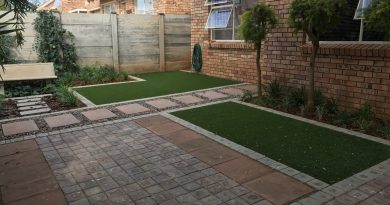Use your camera to make an inventory of items for household insurance
Most of the fights between insured home owners and their insurance companies occur when there is a dispute as to what was insured and what the value of those items is. It is always best to “stick to the facts” and have these facts at hand to settle any disputes.
But which is the best way to collect and record factual evidence as to what is in my home?
It is now simple, easy and effective to use camera equipment to compile an inventory of household items. It is always best advice to have a proper file with documentation of all your insured items and with all the new camera technology available this has become so much easier. Records can now be kept on something as small as a memory stick. This could include scanned documents, video footage and even audio.
We have come across a very insightful piece by Ronald R. Reitz titled How to do a Home Insurance Inventory using Your Camcorder or Digital Camera and we would like to share some of his suggestions:
Why do we advise home owners to record items on video?
We all need to answer the following questions – “If your home and possessions were destroyed by a natural disaster, how easy would it be for you to remember every single item in your house? Would you be able to describe each and every possession your family had accumulated over the years, and then estimate what it would cost to replace each item today?
The insurance company will request an itemized inventory of all damaged and/or destroyed property. The list will need to include a description of the item, the age of the item, and the cost to replace it today. You will even be required to separate your damaged property from your undamaged property. Have you ever considered where you could store all of your undamaged property? After a disaster, you will have more important things to worry about than completing an inventory of lost items.
The process of searching through all of your damaged things is not only a tedious one; it can be unpleasant and painful. Quality Claims recommends an annual family meeting to sit together and compile, or update, an inventory of all of your possessions. For many people, a good time to do this is the beginning of each year, right after the holidays, when you may have lots of shiny new toys, electronics, jewelry and other gifts. You will need to scan each room, identifying every item.
A fun way to do accomplish this, and probably the easiest and quickest – is to use a video camera or camcorder to make a video record of your property. As you record the video, describe to the viewer what you are looking at.
Using the video camera for home and household insurance
Here are some of the suggestions from Mr Reitz on how to go about using the camera to compile an inventory:
Go room by room: Start in the master bedroom: open your closets and make a slow pan across your hanging clothes, shoes and other items you store there. While panning the closet contents you can elaborate with details like: “Here are five businesses suits, 12 pairs of pants and 12 blouses – worth about two thousand five hundred dollars”. If you have any expensive or hard to replace items be sure to draw attention to them and record a clear image.
Open your drawers and lay smaller items like jewelry, watches, and personal items on your bed and photograph those. It is helpful to have your completed inventory list on hand with the detailed information about the items and prices. Ideally, one person should operate the camera while the other reads from the list.
Don’t forget the garage or the kitchen. Make sure you pull out those treasured tools, pots and pans, holiday decorations, etc., and document them as well.
If you have outbuildings or have invested in landscaping, make sure it all is on video. Open up the shed and film or photograph anything inside of it.
What are the technical issues to consider?
There are several technical issues to consider:
1) Make sure there is enough light in the room so all of the items can be seen adequately and you are close enough to the video camera so your voice can be heard,
2) Make sure there is a tape, flash disk or other storage device in the camera, and
3) Remember to start with a fully-charged battery so you won’t have to stop mid -way to recharge it.
Additional suggestions:
Make it fun. Get the kids involved. Turn it into a family project. Make sure they help out when you are in their room shooting video of their furniture, toys, computers, cameras and other possessions. You might say “Santa got this computer last Christmas for Mary. It would probably cost us about 0 to replace it.”
Making copies and storing the evidence
When you are all done, watch the video yourself to make sure you have not missed anything, that the images are clear, and then MAKE COPIES. Burn a few copies to DVDs or onto removable flash or hard drives, and store them away in your safe deposit box, in a secure drawer at work, and maybe send a copy to a relative. You can also post it to an online data storage site. If you have filled out a written spreadsheet, keep copies offsite along with the video.
Some people are uncomfortable speaking on camera. Keep in mind – you are not trying to earn an award for film making. You are just making a documentary record of your possessions. If you make a mistake you can always re-record it. Hopefully, no one will ever have to watch this video again.
Advice on making the process easier
Here are a few more tips to make the process easier and more effective.
1. To research how much items cost to replace on your inventory list, you can “shop on line” to see what it would cost to purchase a similar item now.
2. Confirm that your homeowner’s insurance policy contains a replacement cost endorsement for your contents. It only costs a few extra dollars per year and is well worth it.
3. If you received a real estate appraisal when you bought your home, make a copy and keep it with your contents inventory information. An appraisal should contain a floor plan as well as descriptions of flooring, roofing, walls, countertops and other items attached to your home. This is critical information the adjuster will need.
4. Finally, if you have a loss, keep in mind that the insurance company will apply depreciation to each item based on the age of the item. The depreciation will reduce the amount of money they will pay you until those items are actually replaced. Once replaced, you will need to provide receipts proving you spent the replacement cost amount for the items in order to be reimbursed for the difference.
Conclusion and Advice
The scanner is another very handy piece of equipment to scan invoices and all documentation pertaining to the purchase of items. You can also scan photos and the signed insurance policy to a PDF file and store them on your memory stick.
Some advice from a friend may also come in handy. My friend Gerrit Olckers always said that there are 2 more commandments we need to note:
-11th Commandment – Thou shall double check – check if the video came out the way it should!
-12th Commandment – Thou shall make back-ups – Always make a copy and store it in a safe place!
Take a small bit of time to collect, record and store this evidence and you may enjoy a pleasant and smooth processing of any insurance claims!
Examples of Charl Wilson making an inventory:




